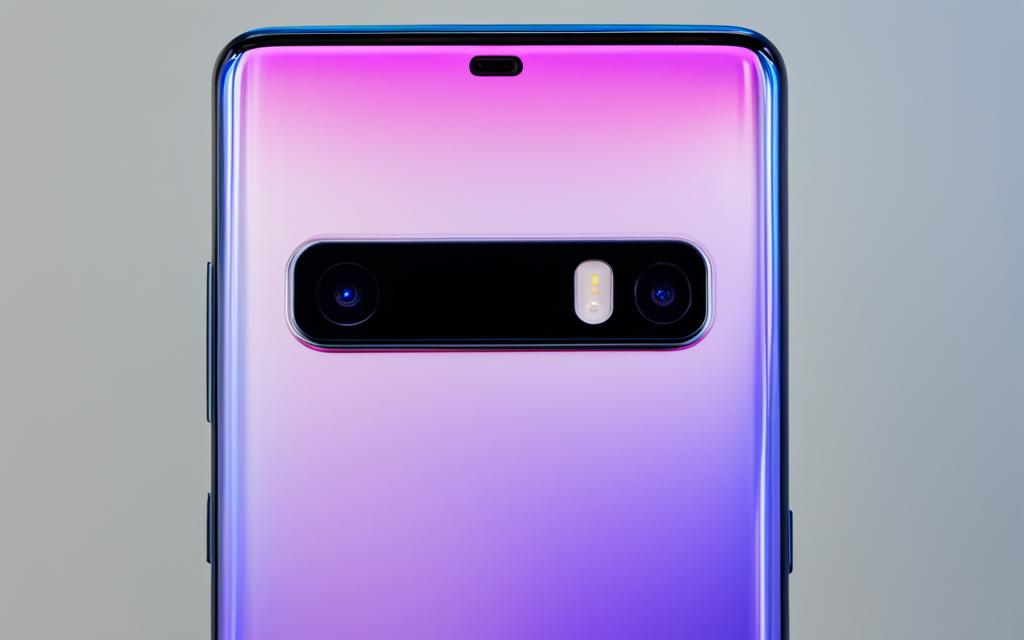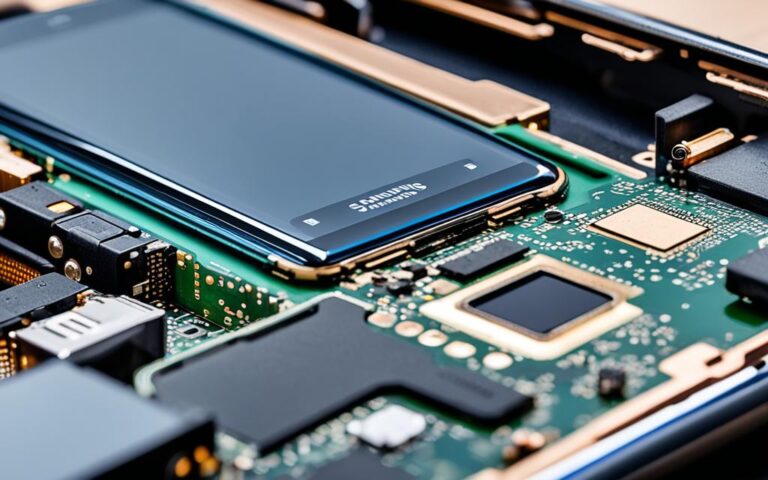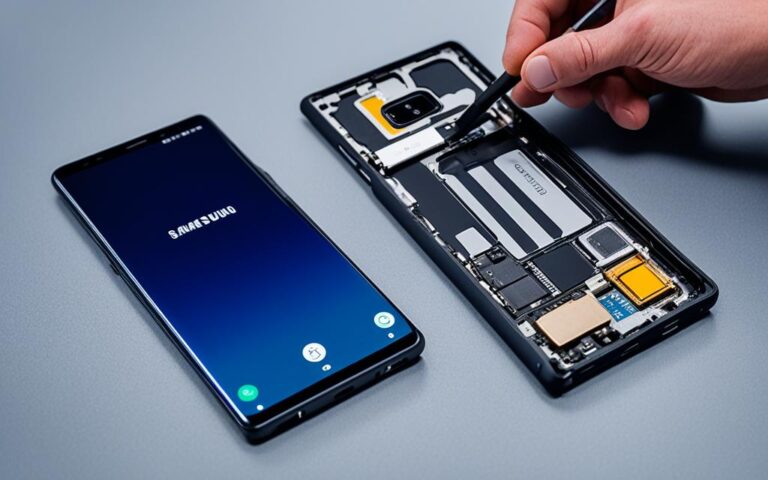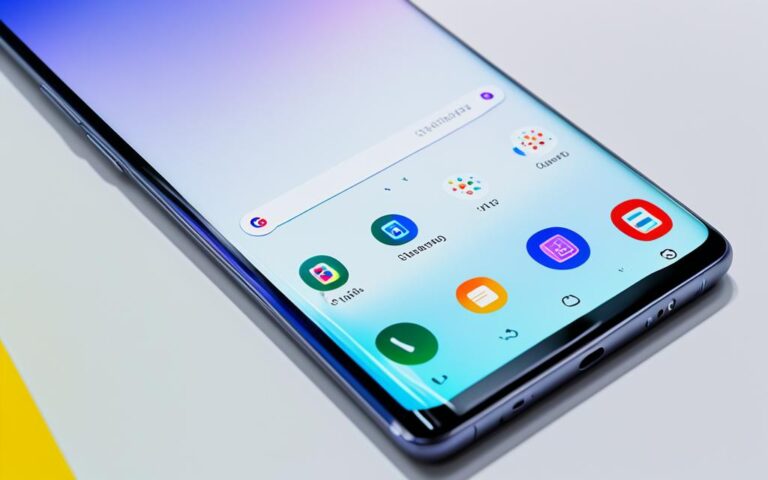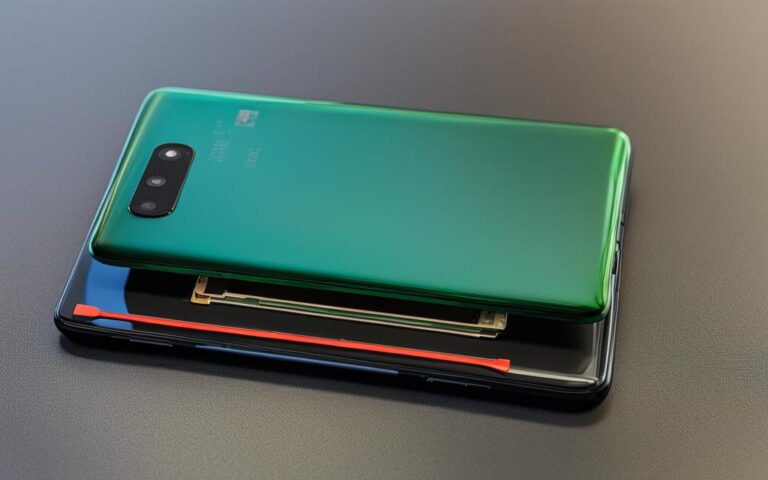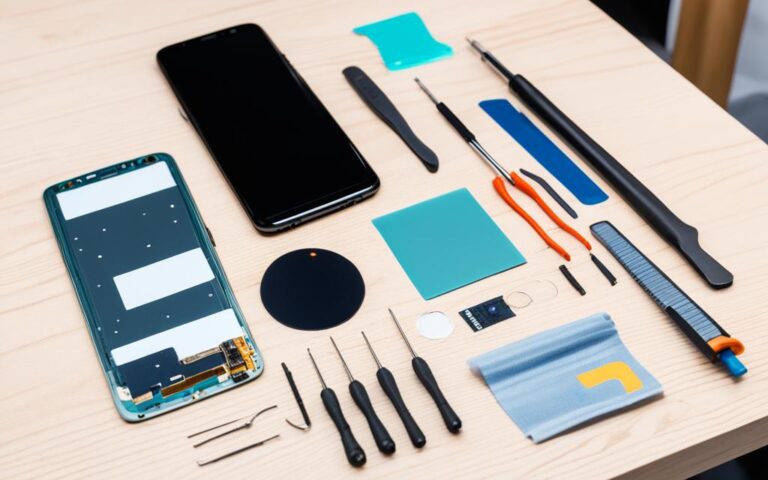Flash Repair Techniques for Better Lighting on Samsung Galaxy S10+
Want to capture stunning photographs with your Samsung Galaxy S10+? One key aspect to consider is the lighting performance. The good news is that you can optimize the flash repair on your device to achieve better lighting and enhance your photography experience.
The Samsung Galaxy S10+ is equipped with a fantastic LED lighting system called Edge lighting, which allows for a customized lighting experience. You can enable lighting effects for notifications and even customize the color, transparency, width, and duration of the edge lighting. This feature adds a touch of style and personalization to your device.
Moreover, the Samsung Galaxy S10+ does not have a notification LED, but fret not. The phone offers flash notifications as an alternative. By adjusting the brightness settings and effectively managing your notifications, you can ensure optimal flash repair and improved lighting performance.
In this article, we will dive into the techniques to enable edge lighting for notifications, utilize flash notifications, troubleshoot apps and system issues, and provide fixes for common problems on the Samsung Galaxy S10+, S10 Plus, and S10e models. By following these tips, you can unlock the full potential of your device and capture stunning photographs with improved lighting performance.
How to Enable Edge Lighting for Notifications
To enable edge lighting for notifications on your Samsung Galaxy S10+, follow these simple steps:
Step 1: Access the Settings
Navigate to the Settings on your Samsung Galaxy S10+. You can find the Settings app among your other apps or swipe down from the top of the screen and tap on the gear icon in the top right corner.
Step 2: Tap on Notifications
Once you are in the Settings menu, scroll down and tap on the Notifications option. This will open a new screen where you can customize various notification settings.
Step 3: Select Notification Pop-Up Style
In the Notifications menu, locate the Notification pop-up style option and tap on it. This will give you access to the edge lighting settings.
Step 4: Customize Edge Lighting
Now, you can customize the edge lighting for your notifications according to your preferences. You can choose from various edge lighting styles, such as Basic, Bubble, or Heart. Additionally, you can adjust the color, transparency, width, and duration of the lighting effect to suit your taste and make notifications more visually appealing and noticeable.
Step 5: Save Your Settings
Once you have customized the edge lighting settings to your liking, make sure to save your changes by tapping on the Save or Apply button.
Now you have successfully enabled edge lighting for notifications on your Samsung Galaxy S10+. Enjoy the personalized and visually appealing lighting effects that will enhance your notification experience.
How to Use Flash Notifications
The Samsung Galaxy S10+ offers a convenient solution for users who miss having a notification LED. While this flagship device does not have a dedicated LED indicator, users can still stay informed with flash notifications. By enabling this feature, users can rely on the LED indicator located at the top left of the front of the phone to display different colors that indicate various notifications and functions.
Enabling Flash Notifications
Enabling flash notifications on your Samsung Galaxy S10+ is quick and straightforward. Simply follow these steps:
- Open the Settings app on your phone.
- Navigate to Accessibility.
- Scroll down and tap on Advanced settings.
- Locate the Flash notifications option and toggle it on.
- Select your desired options, such as flash duration and flash rate.
Now that flash notifications are enabled, the LED indicator on your Samsung Galaxy S10+ will illuminate in different colors to alert you to specific notifications and functions.
Understanding Flash Notification Colors
The LED indicator displays a range of colors, each representing a different notification or function. Here is a list of common flash notification colors and their meanings:
| Color | Meaning |
|---|---|
| Blue | Turning on/off |
| Red | Charging |
| Green | Fully charged |
| Yellow | Low battery |
| Orange | Silent mode |
| Purple | Do not disturb mode |
| White | Incoming call or message |
| Cyan | Email or app notification |
These are just a few examples of the flash notification colors and their meanings. The LED indicator can display additional colors for various third-party apps and functions. By familiarizing yourself with these colors, you can easily identify different notifications and functions without the need for a traditional notification LED.
Now that you know how to use flash notifications on your Samsung Galaxy S10+, you can stay informed and never miss an important notification.
Troubleshooting Apps and System Issues
The Samsung Galaxy S10+ may encounter various software-related issues that can disrupt its performance and functionality. Common problems include apps crashing or force closing, trouble with the fingerprint reader, Bluetooth connection disappearing, weak LTE connection, poor battery life, and overheating. To address these issues effectively, users can follow certain troubleshooting steps and best practices.
1. Reset App Preferences
If apps on your Samsung Galaxy S10+ frequently crash or force close, resetting app preferences can help resolve the issue. To do this, go to Settings > Apps > App Manager and tap on the three-dot menu. From there, select “Reset app preferences” to restore default settings. This action can resolve any conflicts or misconfigurations causing app crashes.
2. Update Software
Keeping your Samsung Galaxy S10+ software up to date is crucial for optimal performance and bug fixes. Check for software updates regularly by going to Settings > Software update > Download and install. Installing the latest updates can rectify known issues, enhance stability, and improve the overall user experience.
3. Check in Safe Mode
If you suspect a specific app is causing issues on your Samsung Galaxy S10+, try booting it into safe mode to isolate the problem. Press and hold the power button until the power menu appears, then tap and hold “Power off” until the “Restart in Safe Mode” option appears. This mode disables all third-party apps, allowing you to determine if the problem persists without them. If the issue doesn’t occur in safe mode, it’s likely caused by an app you installed.
4. Manage Brightness Settings
Poor battery life and overheating can sometimes be attributed to excessive display brightness. Lowering the screen brightness or enabling the automatic brightness feature can help conserve battery power and reduce heat generation. To adjust brightness settings, go to Settings > Display > Brightness and adjust the slider to your desired level.
5. Request a Repair Service
If you’ve tried all the troubleshooting steps and encounter persistent issues with your Samsung Galaxy S10+, it may be necessary to seek professional assistance. Contact the Samsung support team or visit an authorized service center to diagnose and repair any hardware or software-related problems.
6. Turn off App Optimization for Bluetooth
If you experience Bluetooth connectivity issues on your Samsung Galaxy S10+, disabling the app optimization feature for Bluetooth may provide a solution. Go to Settings > Apps > Menu (three dots) > Special access > Optimize battery usage. In the dropdown menu, select “All apps,” scroll to Bluetooth, and toggle off the optimization option. This action prevents aggressive battery optimizations that can interfere with Bluetooth functionality.
7. Seek Assistance from the Carrier or Manufacturer
If you’re unable to resolve the issues with your Samsung Galaxy S10+ on your own, reach out to your mobile carrier or Samsung directly for further guidance. They can offer specialized support and troubleshooting steps tailored to your specific device and network configuration.
Tackling apps crashing, force closing, fingerprint reader issues, Bluetooth connectivity problems, weak LTE signal, poor battery life, and overheating requires a systematic troubleshooting approach. By following the recommended steps and seeking assistance when needed, users can enjoy a seamless experience with their Samsung Galaxy S10+.
Common Problems and Troubleshooting Steps
| Issue | Troubleshooting Steps |
|---|---|
| Apps crash or force close | 1. Reset app preferences 2. Update software 3. Check in safe mode |
| Fingerprint reader issues | 1. Update software 2. Delete and re-add fingerprints 3. Clean the fingerprint sensor |
| Bluetooth connection disappears | 1. Turn off app optimization for Bluetooth 2. Restart phone and Bluetooth device 3. Clear Bluetooth cache |
| Weak LTE connection | 1. Check network coverage 2. Toggle airplane mode on/off 3. Reset network settings |
| Poor battery life | 1. Adjust brightness settings 2. Limit background app activity 3. Identify power-hungry apps |
| Overheating | 1. Remove phone case 2. Close unused apps and processes 3. Avoid extreme ambient temperatures |
Common Problems and Fixes for Galaxy S10, S10 Plus, and S10e
The Samsung Galaxy S10, S10 Plus, and S10e are powerful smartphones that offer a range of features and capabilities. However, like any device, they may encounter common problems that can hinder the overall experience. In this section, we will discuss some of these issues and provide solutions to help you resolve them.
1. Apps Crashing or Force Closing
One common problem Galaxy S10, S10 Plus, and S10e users may encounter is apps crashing or force closing unexpectedly. This can be due to various factors, including outdated software or conflicts with other apps. Fortunately, there are some steps you can take to fix this issue:
- Update the app: Ensure that the problematic app is up to date by checking for updates on the Google Play Store or the Galaxy Store.
- Clear app cache and data: Go to Settings > Apps, select the app causing the issue, and tap on Storage. From there, you can clear the cache and data to refresh the app.
- Reinstall the app: If the problem persists, uninstall the app and reinstall it from the respective app store.
2. Trouble with the Fingerprint Reader
The Galaxy S10, S10 Plus, and S10e feature an in-display ultrasonic fingerprint reader, which offers advanced security. However, users may occasionally face difficulties with the fingerprint reader. Here are some potential fixes:
- Re-register your fingerprint: Remove your existing fingerprint data and re-register your fingerprint to ensure accurate recognition.
- Clean the screen and your finger: Ensure that the display and your finger are clean and free from any dirt or residue that could affect fingerprint recognition.
- Update the software: Check for software updates that may include improvements or bug fixes related to the fingerprint reader.
3. Bluetooth Connection Disappearing
Some Galaxy S10, S10 Plus, and S10e users have reported issues with Bluetooth connections randomly dropping or disappearing. If you are experiencing this problem, try the following solutions:
- Toggle Bluetooth off and on: Turn off Bluetooth and then turn it back on to refresh the connection.
- Unpair and repair devices: Unpair the affected device from your phone and then re-pair it to establish a new connection.
- Reset network settings: Go to Settings > General Management > Reset > Reset Network Settings to clear any network-related issues that may be impacting Bluetooth connections.
4. Weak LTE Connection
If you are experiencing a weak LTE connection on your Galaxy S10, S10 Plus, or S10e, try the following troubleshooting steps:
- Toggle airplane mode: Turn on and off airplane mode to refresh your connection to the cellular network.
- Check network signal strength: Ensure that you are in an area with adequate network coverage and that there are no physical obstructions or interference affecting the signal.
- Contact your network provider: If the problem persists, reach out to your network provider for assistance and to check for any network-related issues.
5. Poor Battery Life
Samsung Galaxy S10, S10 Plus, and S10e users may experience poor battery life due to various factors such as excessive background app usage or outdated software. Here are some tips to improve battery life:
- Optimize battery usage: Go to Settings > Device Care > Battery to access options for optimizing battery usage. Restrict background activity for apps that consume a significant amount of battery.
- Reduce screen brightness: Lower the screen brightness or enable auto-brightness to conserve battery power.
- Update software: Keep your device’s software up to date to benefit from optimizations and bug fixes that could improve battery life.
6. Overheating
If your Galaxy S10, S10 Plus, or S10e is overheating, follow these steps to mitigate the issue:
- Avoid resource-intensive tasks: Minimize the use of demanding apps or features that can put strain on the device’s hardware, such as gaming or video streaming.
- Remove the case: If you are using a protective case, remove it temporarily to allow for better heat dissipation.
- Keep the device cool: Avoid exposing your phone to direct sunlight or high-temperature environments. If necessary, use a cooling pad or take breaks between heavy usage to let the device cool down.
By following these tips and troubleshooting steps, you can address common problems that may arise with your Galaxy S10, S10 Plus, or S10e and ensure a smooth and optimal user experience.
| Problem | Solution |
|———————————|——————————————————————————————————————————————————–|
| Apps crashing or force closing | – Update the app
– Clear app cache and data
– Reinstall the app |
| Trouble with the fingerprint reader | – Re-register your fingerprint
– Clean the screen and your finger
– Update the software |
| Bluetooth connection disappearing | – Toggle Bluetooth off and on
– Unpair and repair devices
– Reset network settings |
| Weak LTE connection | – Toggle airplane mode
– Check network signal strength
– Contact your network provider |
| Poor battery life | – Optimize battery usage
– Reduce screen brightness
– Update software |
| Overheating | – Avoid resource-intensive tasks
– Remove the case temporarily
– Keep the device cool |
Conclusion
By utilizing the flash repair techniques mentioned in this article, Samsung Galaxy S10+ users can enhance their device’s lighting performance, resulting in better photography experiences. The LED lighting system, known as Edge lighting, allows users to customize their notifications and create visually appealing effects. Additionally, the absence of a notification LED is compensated by the option to enable flash notifications, which provide a clear indication of various notifications and functions.
To optimize photography and lighting performance, users can follow the step-by-step instructions to enable Edge lighting for notifications and customize the lighting effects according to their preferences. This feature not only makes notifications more visually appealing but also ensures that important alerts do not go unnoticed.
In case of any issues, users can refer to the troubleshooting section, which provides solutions for common problems like app crashes, fingerprint reader troubles, and weak LTE connections. By following these troubleshooting steps, users can resolve software-related issues and optimize their device’s performance.
Overall, by implementing these flash repair techniques and effectively managing system issues, Samsung Galaxy S10+ users can enjoy optimal photography experiences with improved lighting performance on their devices.
